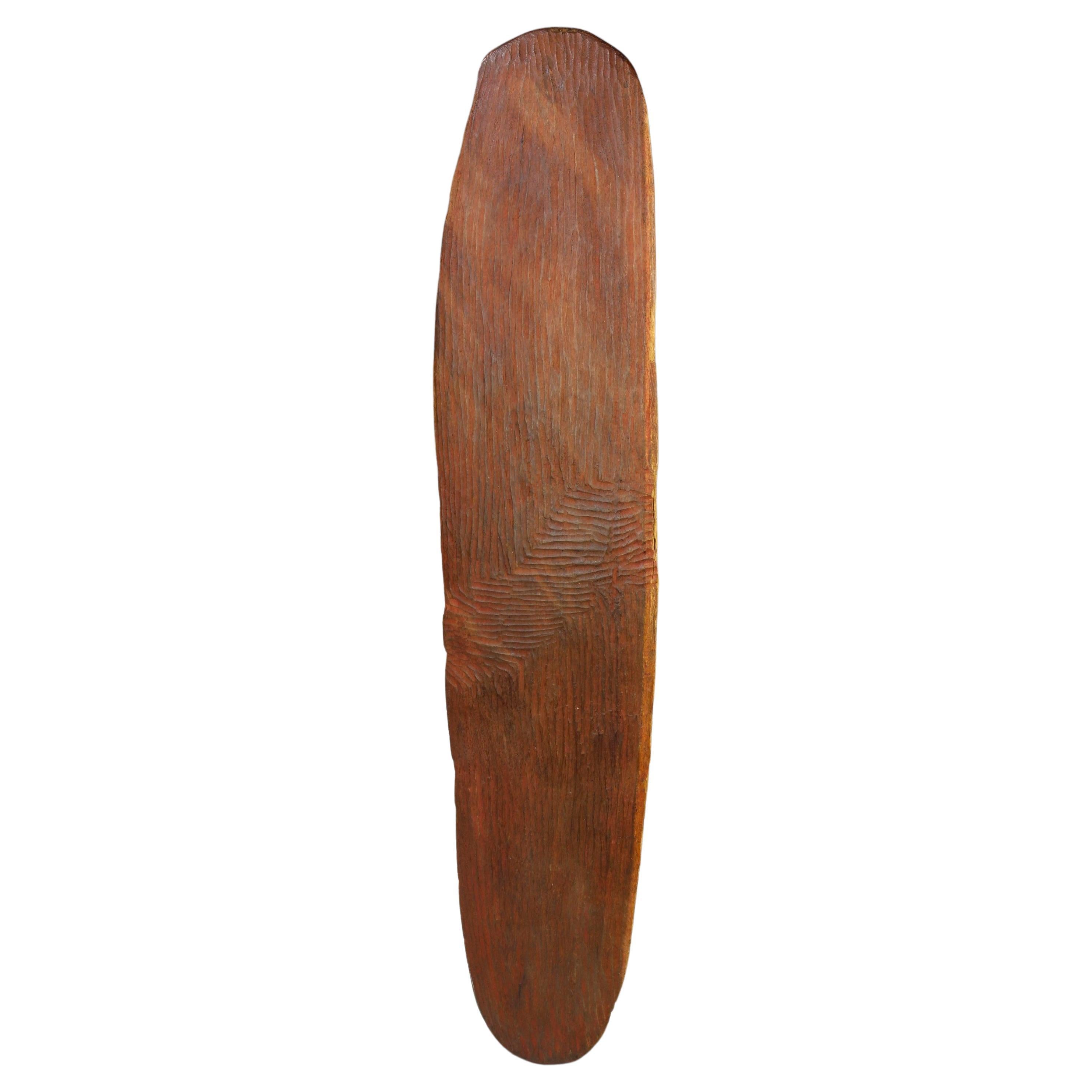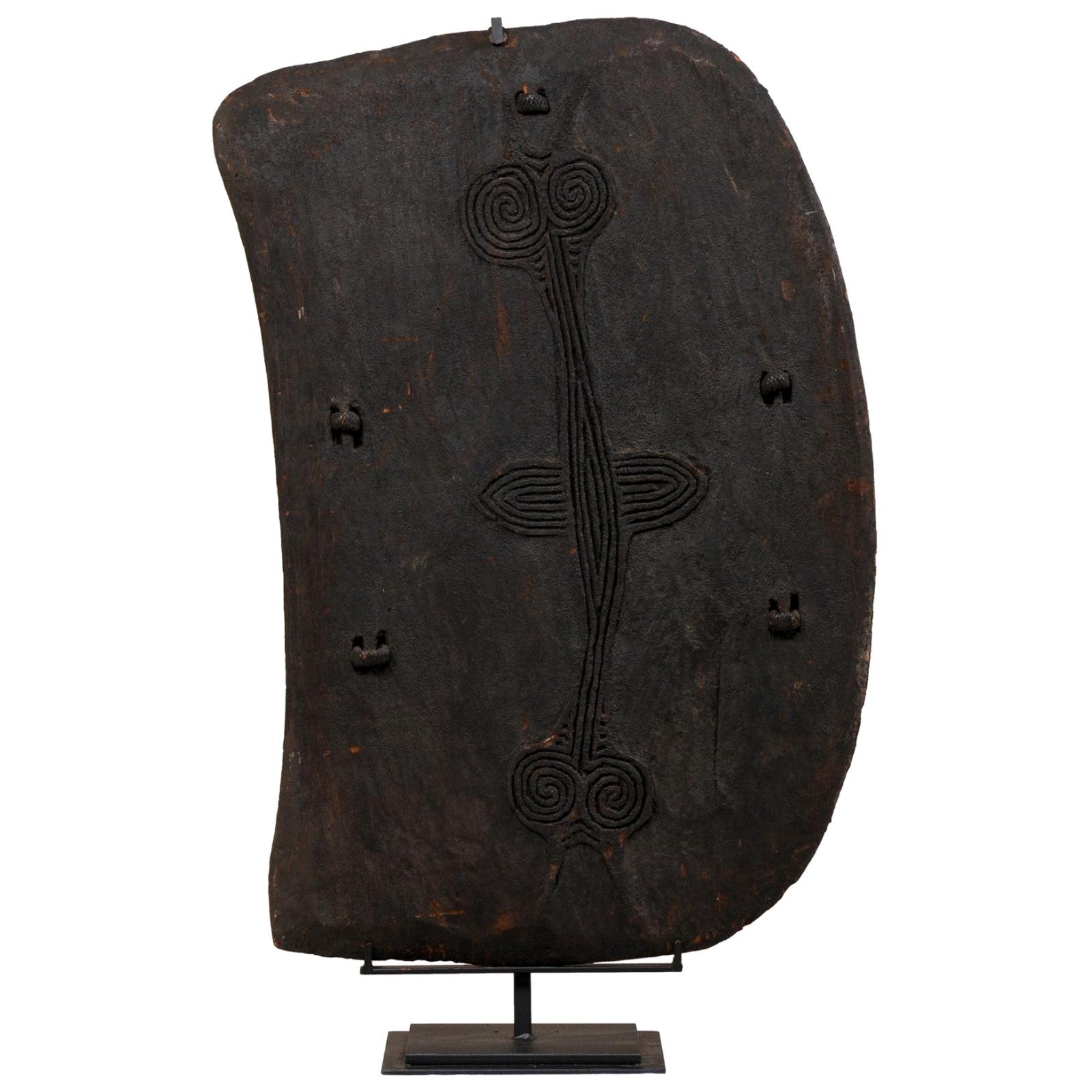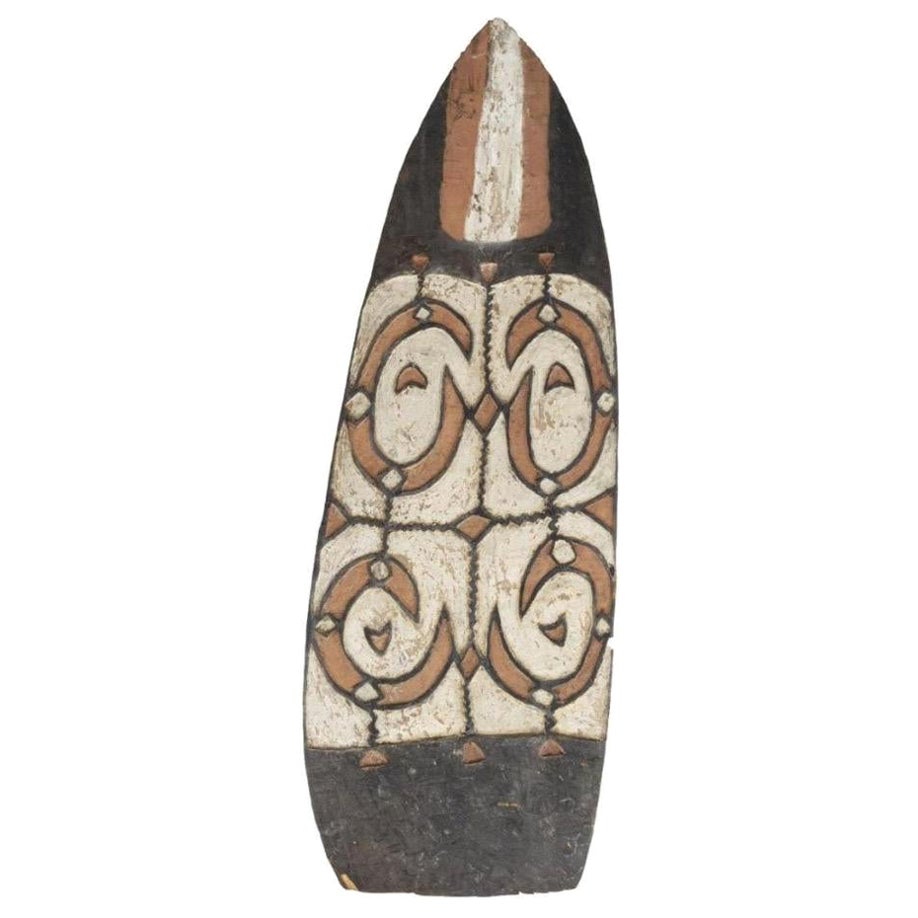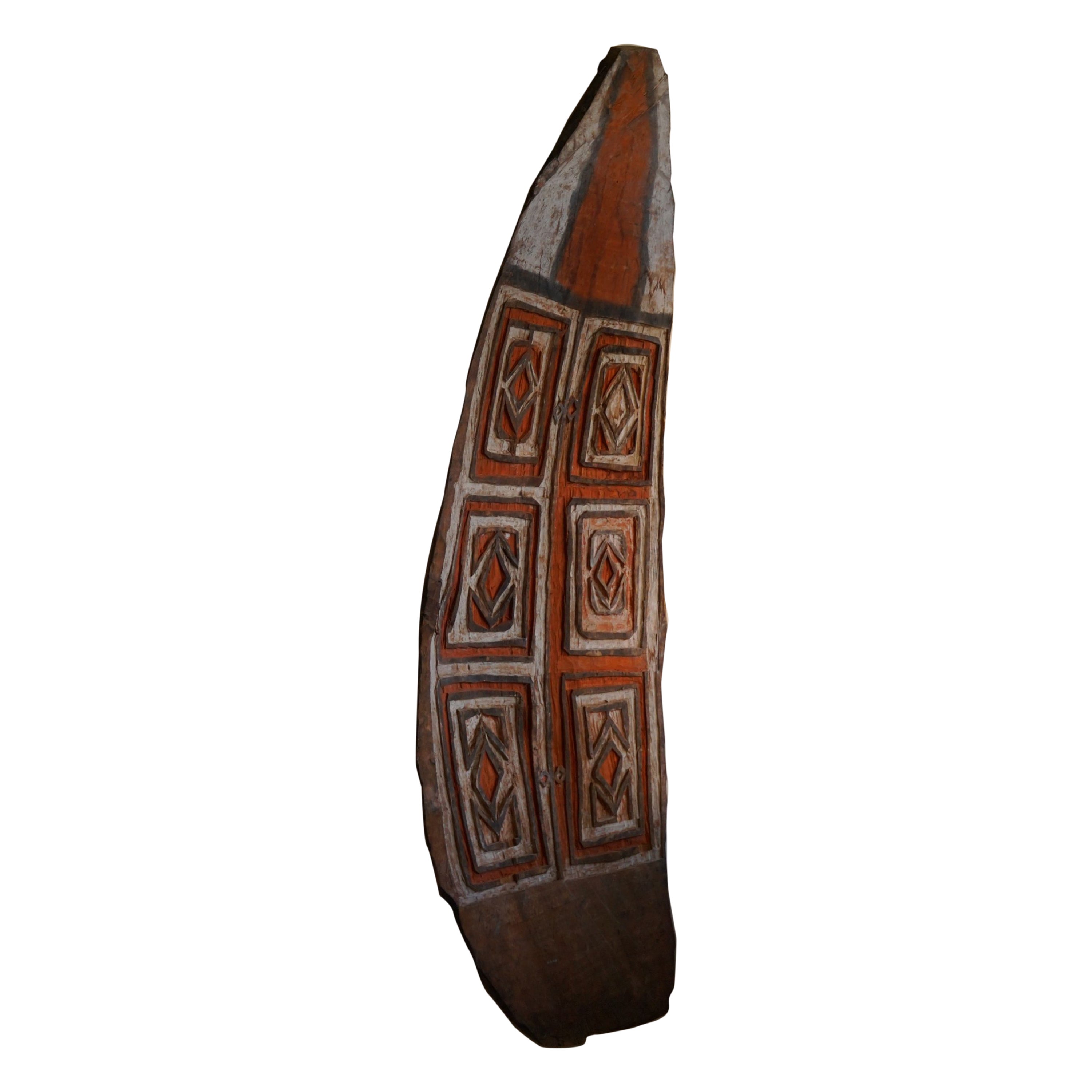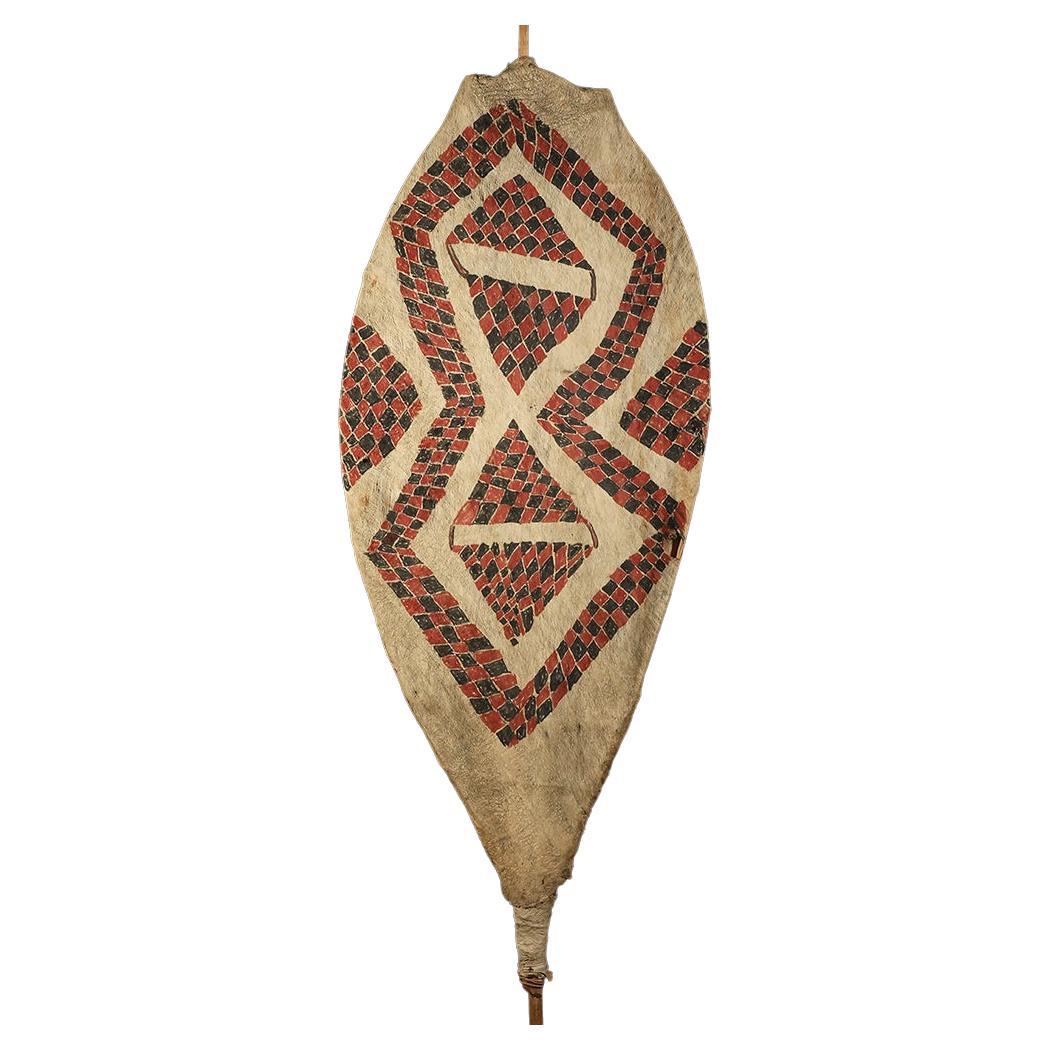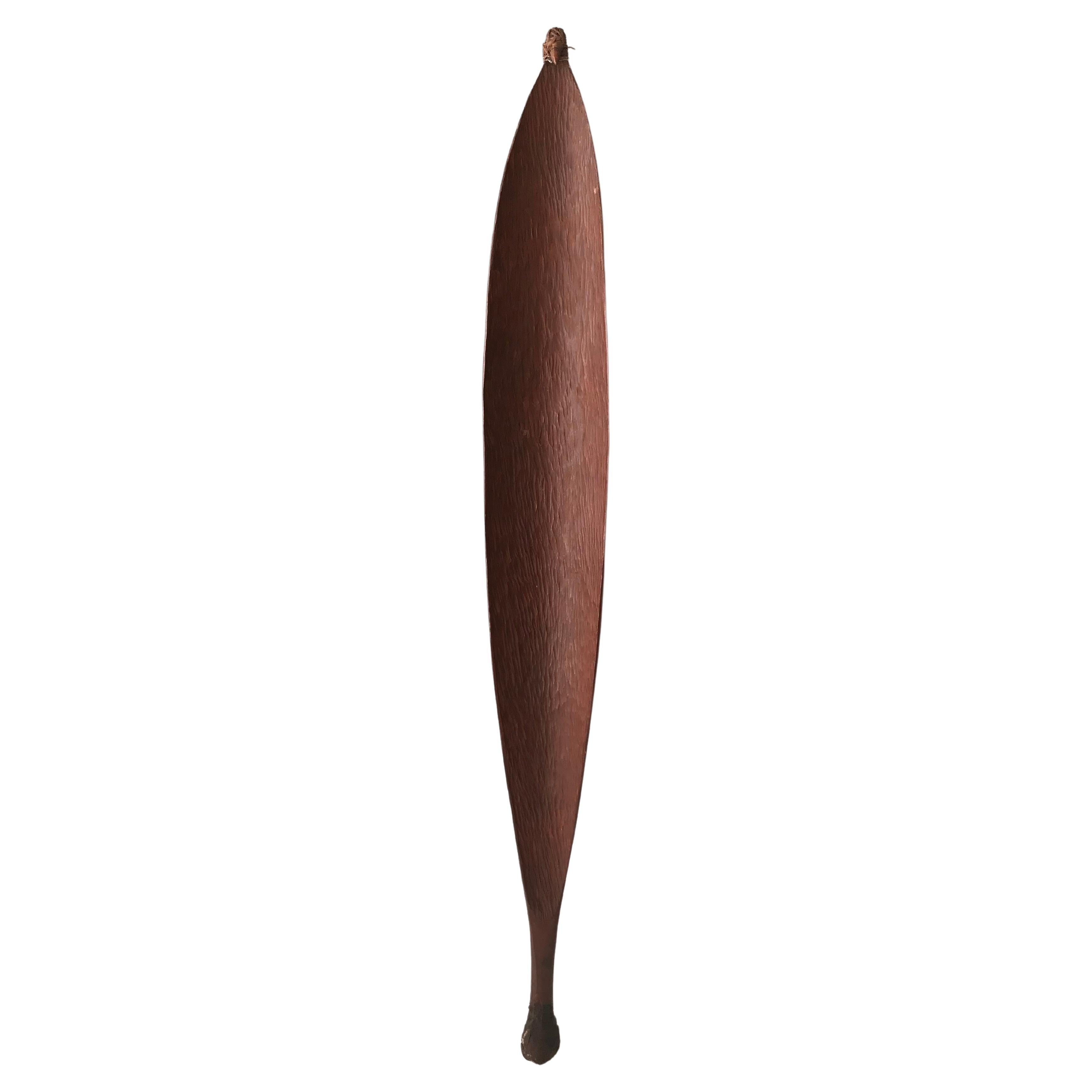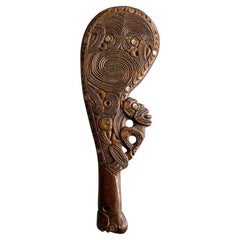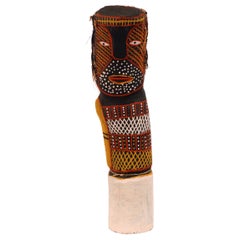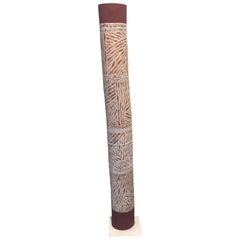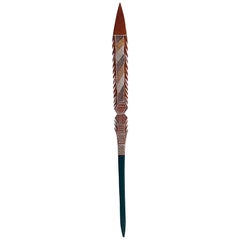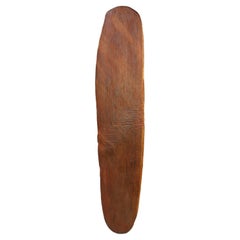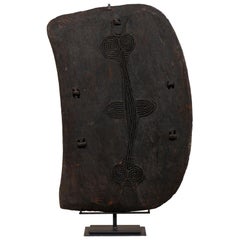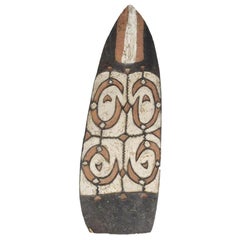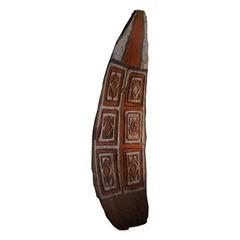Items Similar to Carved Wood Aboriginal Shield, Western Australia
Want more images or videos?
Request additional images or videos from the seller
1 of 16
Carved Wood Aboriginal Shield, Western Australia
$2,200
£1,669.31
€1,908.71
CA$3,072.80
A$3,416.54
CHF 1,783.93
MX$41,587.60
NOK 22,762.15
SEK 21,327.05
DKK 14,245.02
Shipping
Retrieving quote...The 1stDibs Promise:
Authenticity Guarantee,
Money-Back Guarantee,
24-Hour Cancellation
About the Item
A tall and narrow parrying shield from the Aboriginal people living in the Western Australia. The piece was carved out of a single block of hard wood that is dense and heavy. Of a classic and distinguish spindle shape, a swell middle part integrates the handle on the back. The surface, both front and back, was carved with zigzag pattern that circulates radiating sun-like motifs. The carving was quite rustic, unlikely achieved with modern metal tools.
The shield shows off a graceful sculptural form but it also displays lots of patina, indicating it as a field piece used by the aboriginals rather than a tourist market piece. There are significant rubbing and wear on the handles and the convex part of the front. A few scattered holes suggest that they are the results of warding off projectile weapons per there in situ function. In addition, there are old marks and small surface split all over the piece. It is a lovely and authentic example of a parrying shield for collectors of aboriginal art.
- Dimensions:Height: 26.5 in (67.31 cm)Width: 5 in (12.7 cm)Depth: 4 in (10.16 cm)
- Style:Tribal (Of the Period)
- Materials and Techniques:
- Place of Origin:
- Period:
- Date of Manufacture:Early 20th Century
- Condition:Wear consistent with age and use. Minor losses. Lots of patina on surface as described and shown in the pictures.
- Seller Location:Atlanta, GA
- Reference Number:1stDibs: LU945023612702
About the Seller
4.9
Platinum Seller
Premium sellers with a 4.7+ rating and 24-hour response times
Established in 2006
1stDibs seller since 2010
564 sales on 1stDibs
Typical response time: <1 hour
- ShippingRetrieving quote...Shipping from: Atlanta, GA
- Return Policy
Authenticity Guarantee
In the unlikely event there’s an issue with an item’s authenticity, contact us within 1 year for a full refund. DetailsMoney-Back Guarantee
If your item is not as described, is damaged in transit, or does not arrive, contact us within 7 days for a full refund. Details24-Hour Cancellation
You have a 24-hour grace period in which to reconsider your purchase, with no questions asked.Vetted Professional Sellers
Our world-class sellers must adhere to strict standards for service and quality, maintaining the integrity of our listings.Price-Match Guarantee
If you find that a seller listed the same item for a lower price elsewhere, we’ll match it.Trusted Global Delivery
Our best-in-class carrier network provides specialized shipping options worldwide, including custom delivery.More From This Seller
View AllCarved Wood Māori Wahaika Club New Zeland
Located in Atlanta, GA
A wood club known as Wahaika intricately carved and inlayed with small round shells from New Zealand circa 1920s. The hand-hold club was traditionally used as a close-range combat we...
Category
Early 20th Century New Zealand Tribal Sculptures and Carvings
Materials
Wood
Australian Aboriginal Ironwood Bima Figure Carving Tiwi Island
By Myra Ann Tipiloura
Located in Atlanta, GA
Collected in Tiwi Island off the coast of Northern Australia, this Bima Figure Carving was carved and painted by Myra Ann Tipiloura out of Iron wood. It w...
Category
20th Century Australian Tribal Figurative Sculptures
Materials
Wood
Australian Aboriginal Painting on Hollow Log
Located in Atlanta, GA
Yalatai hollow log.
Artist: Binguur Wirrpanda.
Year of birth: 1973.
Nationality: Australian.
Region: East Arnhem Land.
Medium: Ochres on hollow log.
M...
Category
21st Century and Contemporary Australian Tribal Outsider and Self Taught...
Materials
Wood
Australian Aboriginal Carved and Painted Spear from Melville Island
By Patrick Freddy Puruntatameri
Located in Atlanta, GA
Title: A ceremonial spear with clan design paint
Artist: Patrick Freddy Puruntatameri
DOB: 19/04/1973
Medium: Ocher paint on ironwood carving
DOC:...
Category
Early 2000s Australian Folk Art Wall-mounted Sculptures
Materials
Wood
Australian Aboriginal Carved Ancestor Figure with Ochre Paint
Located in Atlanta, GA
Hand-carved wood ancestor figure with surface pictorial carving showing kangaroo hunting and decorated with black and red paint and white and yellow ocher pigment. The figure slightly leans forward as made.
The piece was carved by aboriginal artist...
Category
Early 2000s Australian Folk Art Figurative Sculptures
Materials
Wood
Australian Aboriginal Yawkyawk Fiber Sculpture
By Allison Guwanjguwanj
Located in Atlanta, GA
Fiber art by contemporary aboriginal artist
Allison Guwanjguwanj. It depicts a dreamtime creature called "Yawkyawk" which is the ancestor of the cl...
Category
Early 2000s Australian Tribal Wall-mounted Sculptures
Materials
Natural Fiber
You May Also Like
19th Century Aboriginal Australian Stone-Cut Wunda Shield
Located in London, GB
This 19th century finely incised, stone-cut Aboriginal Wunda shield from Australia (Western Desert) exhibits lineal decorations to the front and the rear.
- Ex Private Collection, ...
Category
Antique 19th Century Australian Tribal Tribal Art
Materials
Wood
Papua New Guinea Carved-Wood Lumi Shield on Custom Iron Stand
Located in Atlanta, GA
A Papua New Guinea carved-wood Lumi shield from the mid-20th century. This vintage war shield from the West Sepik region, the northwestern most province of...
Category
Mid-20th Century Papua New Guinean Sculptures and Carvings
Materials
Iron
Monumental Oceanic Asmat People Carved Painted Wooden War Shield
Located in Forney, TX
A monumental, rare and important Oceanic Papuan Asmat People tribal carved war shield from the first half of the 20th century, collected from the coast of the headhunting tribe in Papua New Guinea, a Provincial Indonesian island in the mid 20th century.
Among the Asmat, war shields are the most powerful symbolic element of a warrior's equipment, and have many layers of meaning. Traditionally, they were functional items used to protect warriors in battle by deflecting an enemy's spears and arrows. The carved and painted images on the surface of the shields were also intended to frighten the enemy and symbolize the power of the ancestors.
Ancestral imagery appears on multiple forms of Asmat art...
Category
Early 20th Century Papua New Guinean Tribal Tribal Art
Materials
Wood
Oceanic Vintage Shield, Tribal Wall Art, Papua New Guinea, Late 19th Century
Located in Odense, DK
A large decorative and rare hand carved tribal war shield in traditional colors, made in Papua New Guinea in the late 19th century. Functional as beautiful ...
Category
Antique Late 19th Century Papua New Guinean Primitive Decorative Art
Materials
Wood, Paint
Antique Tapa Tribal Dance Shield, New Guinea
Located in Point Richmond, CA
Tapa dance shield.
Baining People, New Britain, Papua New Guinea.
First half, 20th century
Pounded mulberry bark painted with natural pigments
Measure...
Category
Early 20th Century Papua New Guinean Tribal Tribal Art
Materials
Bamboo, Natural Fiber
Aboriginal Carved Wood Woomera Australia Tribal Art Interior Design
Located in London, GB
Fine Large Aboriginal woomera carved in hard mulga wood with pleasing curved chip carved interior with gum handle and possum tooth barb
Beautiful p...
Category
Early 20th Century Australian Tribal Art
Materials
Hardwood
More Ways To Browse
In Australia Furniture
Antique Shields
Carved Wood Block
Australian Antique Furniture
Metal Shield
Carved Shield
Wood Shield
Antique Wood Spindles
Tall Narrow Art
Carved Wood Shield
Antique Wood Splitter
Spindle Art
Spindler Art
Wood Weapons
Aboriginal Antique
Australian Aboriginal Carved
Antique Aboriginal Art
Aboriginal Carvings
